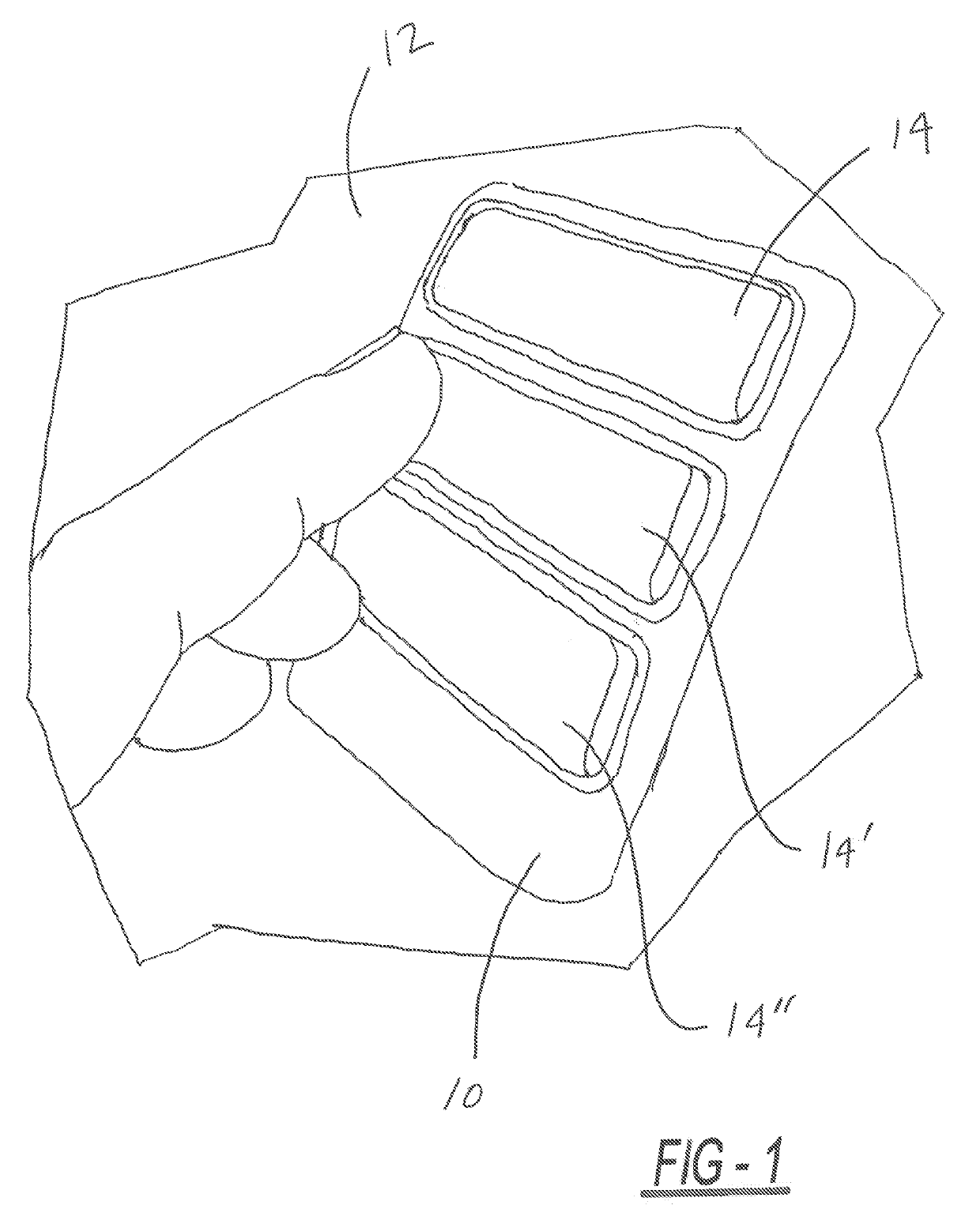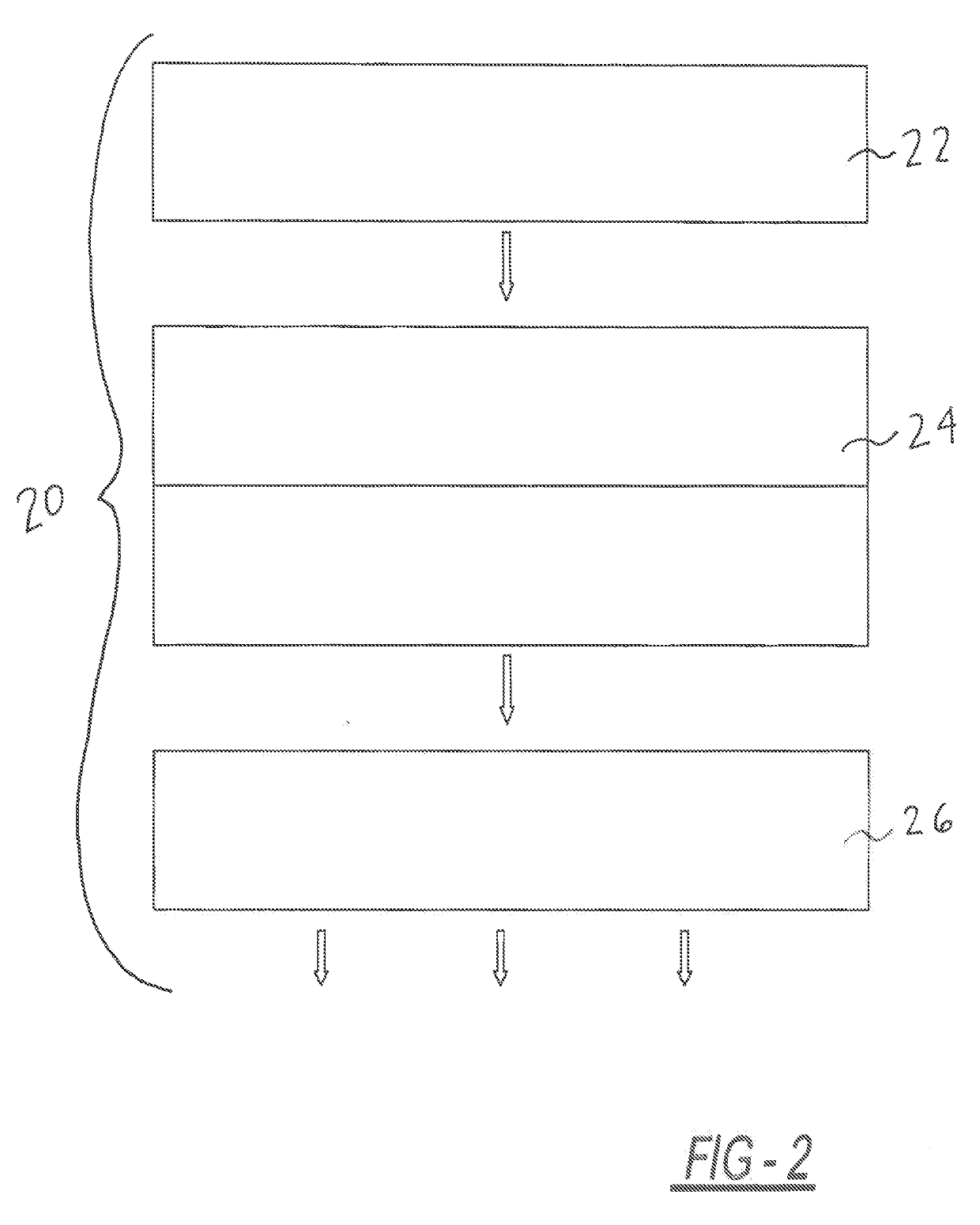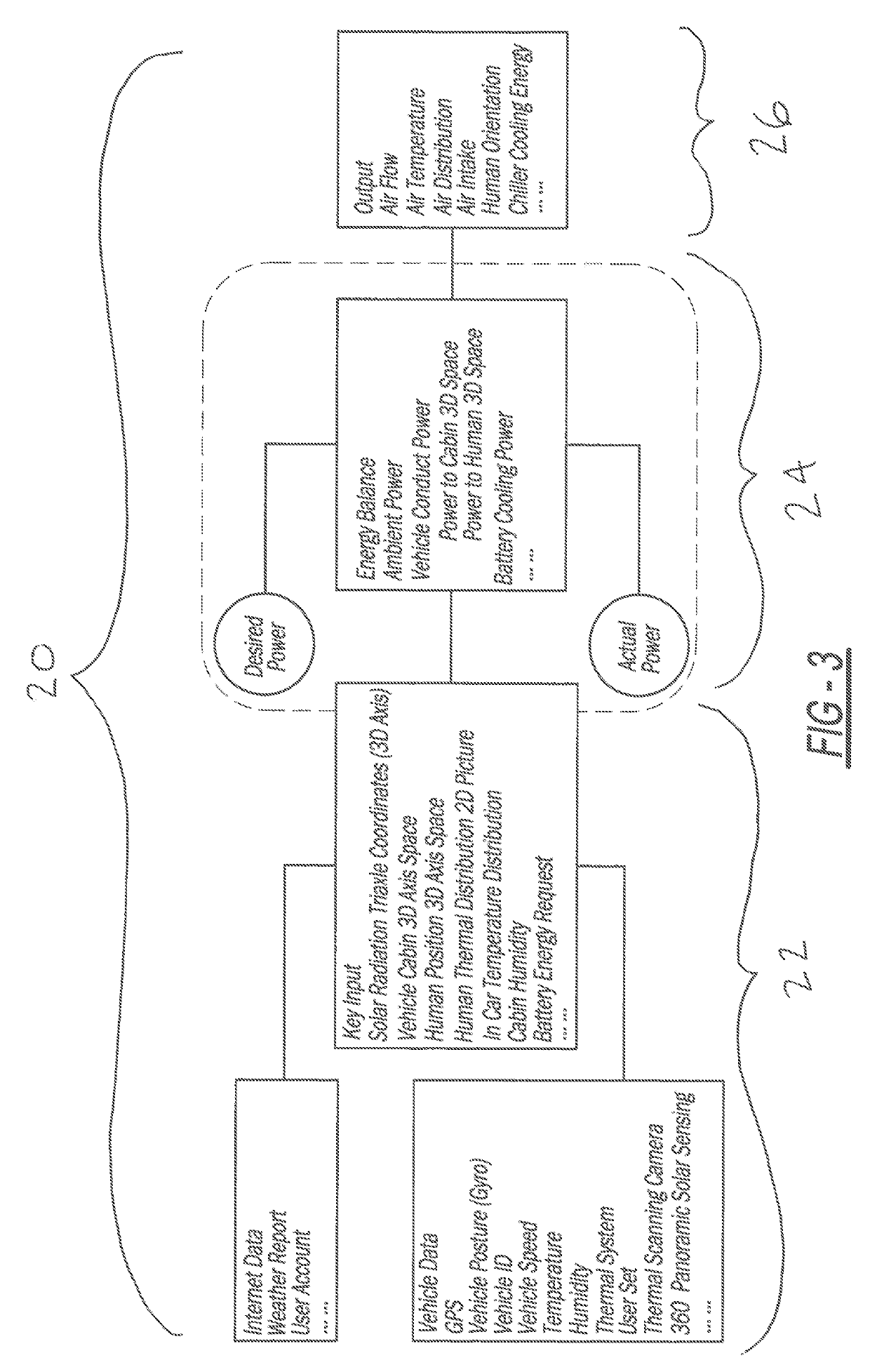Intelligent thermal control system for autonomous vehicle
a technology of intelligent thermal control and autonomous vehicles, applied in vehicle heating/cooling devices, vehicle components, transportation and packaging, etc., can solve the problem of relatively primitive interior heating systems of vehicles, and achieve the effect of maximising system efficiency
- Summary
- Abstract
- Description
- Claims
- Application Information
AI Technical Summary
Benefits of technology
Problems solved by technology
Method used
Image
Examples
Embodiment Construction
[0023]In the following figures, the same reference numerals will be used to refer to the same components. In the following description, various operating parameters and components are described for different constructed embodiments. These specific parameters and components are included as examples and are not meant to be limiting.
[0024]According to the disclosed inventive concept, the thermal system requires minimal operator or user input to achieve maximum passenger comfort throughout the whole vehicle occupancy experience. The thermal system learns the desirable comfort range for given occupants and thus requires minimal input. The thermal system of the disclosed inventive concept is capable of managing power efficiently by being able to predict upcoming drive cycles and pre-conditioning the battery and the vehicle cabin while the system is charging, thereby decreasing power consumption while the vehicle is in operation and decreasing power usage while charging. Pre-conditioning o...
PUM
 Login to View More
Login to View More Abstract
Description
Claims
Application Information
 Login to View More
Login to View More - R&D
- Intellectual Property
- Life Sciences
- Materials
- Tech Scout
- Unparalleled Data Quality
- Higher Quality Content
- 60% Fewer Hallucinations
Browse by: Latest US Patents, China's latest patents, Technical Efficacy Thesaurus, Application Domain, Technology Topic, Popular Technical Reports.
© 2025 PatSnap. All rights reserved.Legal|Privacy policy|Modern Slavery Act Transparency Statement|Sitemap|About US| Contact US: help@patsnap.com



